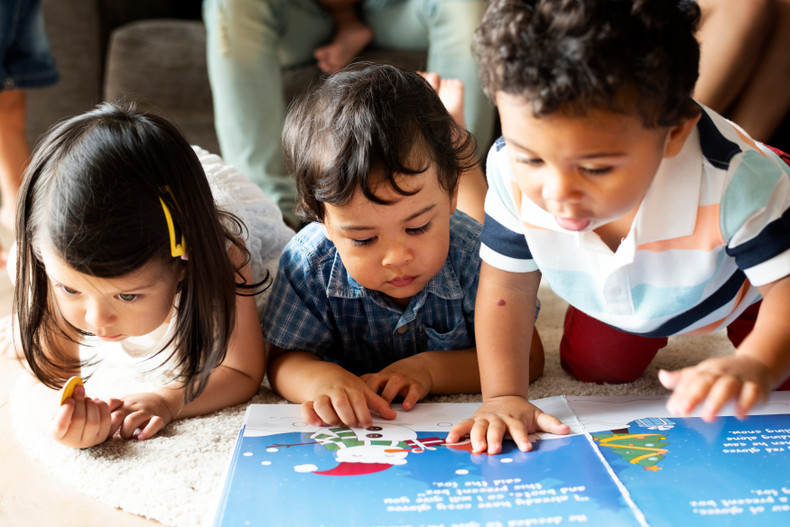
Part I
Sometimes, it’s good to know that what you have been saying for a long time is finally substantiated, especially when you have been bucking the trends for so long. I felt this way when I first began in Montessori many years ago when all Montessori teachers could share was anecdotal evidence that the pedagogy really was a brain compatible, learning model. Today, research study after study supports that Dr. Montessori’s constructivist’s teaching methods are really the best way for children to learn….in fact it could be argued that it is the best way for anyone to learn!
So, for the past decade, as I began to gather tidbits of information on “The Science of Reading” and was observing more and more classrooms in our Public Montessori environments move towards Guided Reading and Leveled Reading, my heart sank. I spoke with curriculum specialists, principals, reading specialists, and our own teachers in training to show and convince them that the phonetic method of reading really did work! Yet, there was always something that stood in the way of me persuading them.
I cited the results of the past twenty years from the National Assessment of Educational Progress’ reading scores that clearly stated only 35% of fourth graders were proficient in reading in 2019, down from 37% in 2017; 34% of eighth graders were proficient in reading, down from 36%. I asked the specialists, “Why, when clearly this isn’t working are we continuing to use this method?” To be fair, they didn’t have a well-defined response either. Many said they were using a phonics-based program in conjunction with the Balanced Literacy program and that was the best of both worlds.
What I did know was that in all the classrooms in which I was observing, children were failing to read at a level expected for their age if they did not have a strong phonetic base. My own Montessori early childhood reading instruction started with many phonological activities that clearly affirmed that if the child could not hear the differences in sounds, there was no point in introducing sandpaper letters. We acknowledged that Dr. Montessori’s language program began here, but we also understood that young children need to isolate and differentiate sounds before they can match a grapheme (letter) to the phoneme (sound). We do it in all the other curriculum areas, sensorial materials, and red and blue rods for counting before the sandpaper numerals. Matching cards and mapping shapes to silhouettes, thick outlines, and thin outlines before we do three-part cards or give them the written name. Why would our language instruction be any different?
Here are the facts. Our brains are naturally adept at learning aurally. For millennia, we as a species, have passed information on to each other orally. Our traditions were shared by telling stories. Communication was through the spoken word. As any elementary Montessori student will share with you, it is only recently that we invented writing and in tandem the ability to read that writing. Learning to read does not come naturally to the brain!
I know it can be difficult to keep all the different “phono” (coming from the Greek word phone meaning sound.) separate and where are they in our classrooms. Let’s look at this chart to see if we can gain some clarity.

When it comes to reading, the ultimate goal is to comprehend what is being read. This is the difference between an emergent reader who is working on fluency and a practiced reader who reads the words “effortlessly” and focuses on the meaning of the sentence. To be fair, this is where specialists became confused. It looks like the practiced reader has “memorized” what the words are and can call them out. In fact, the practiced reader has come upon the word so frequently that those “paths are myelinized” and the brain no longer needs to connect each isolated grapheme to a phoneme, blend them together and come up with word. What is stated in the Science of Reading dating back to Gough and Tumner in 1986 is that reading comprehension is a relationship between word reading and listening comprehension. So, when we speak to our children, read a story to them, ask them questions about their day, we are providing scaffolding for future reading comprehension.
Let’s look at one of the pillars of listening comprehension. Reading aloud to children is expected in our early childhood classrooms. However, I often drew questioning looks from others when I continued this practice in the elementary grades. I was even quizzed as to whether this was the best use of classroom time, especially in Upper Elementary. Please don’t mistake my statement, I was not always reading aloud in the most beneficial way. When I learned to read interactively, that’s when those precious 20 minutes each day began to pay off. Remember the brain learns best aurally. This should always be kept in mind when we are teaching new ideas. Present the concept verbally first with a story or explanation, add in minimal labels and/or vocabulary definitions, and end quickly before the brain decides that it’s listened long enough! This is why those lessons should last no more than 10-12 minutes. As Constructivists we understand that the first few times the brain is introduced to new ideas it takes practice to master.
In early childhood we see this practice as repetition of the activity over and over until the brain says, “That’s enough, I’ve got it!”. In elementary school the practice looks different. There are materials that move from the most concrete presentation as the introduction and then progressively transition towards the abstraction as the child learns more about the concept and can absorb more complex ideas. Some curriculum writers move children from the concrete to abstract, simple to complex too quickly. The result is a patchwork of understanding that may cause difficulties later in the curriculum. Others keep the children working with simple concepts too long. Keeping the brain interested is a fickle thing! However, one thing we do know is that deep learning can come early. All we must do is provide the developing brain with interesting stimuli and continue the conversation.

